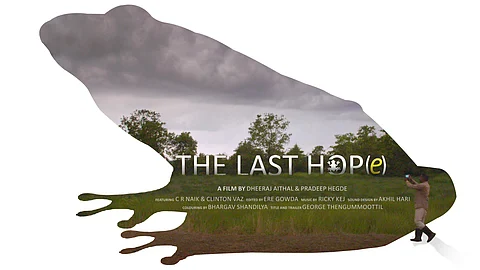

It is common tradition across India for people to get frogs married in order to appease the rain gods. But today, unfortunately, most of the frog species are on the verge of extinction, all thanks to humans who have been damaging the environment. To create awareness on frog conservation, two youngsters from Udupi — Dheeraj Aithal and Pradeep Hegde — have shot a documentary titled The Last Hop(e). Though the duo has different educational qualifications — Dheeraj has a Bachelor's degree in Business Administration from Manipal University, Pradeep has a Bachelor's degree in Biotechnology from Christ University — the duo was always interested in shooting documentaries and short films.
Narrating how the duo met and what led them to collaborate on this project, Dheeraj says, "A few years ago, we met at Felis Creations, a visual arts company in Bengaluru, during our internship. We decided to shoot a documentary on rain and wildlife. In due course of time, we realised that we couldn't afford to shoot documentaries in the national parks. In fact, we did not even have cameras of our own. In order to crowdfund, we shot a trailer for our project and it was a hit among our friends and family. We were able to raise `2 lakh. For the second round of funds, we approached people through social media and with that, we were able to raise `4 lakh. We borrowed cameras from our close friends and started shooting the documentary."
About the documentary
The documentary has been shot in three different locations across Karnataka — Manipal, Gokarna, Kathlekan forest region — and Goa. They began shooting in 2016 and it went on four years as the duo had to rely heavily on the availability of the cameras which they borrowed from friends. According to Dheeraj, editing also consumed a lot of their time as it was their first documentary. But they weren't alone in the process. Award-winning Kannada filmmaker Ere Gowda also helped them get perfect shots of the frogs for the documentary. Likewise, famous music composer Ricky Kej, who came across their trailer, produced the music.
But why a documentary only on frogs? Dheeraj explains, "Frogs are usually found in everyone's backyard but we ignore them. During the monsoons, there's a lot of croaking that we hear. These days, it has reduced in every city due to the growth of the concrete jungle. While we were shooting this documentary, we also came across people who thought that frogs belong only to forests and conserving them is the duty of the forest officials. We took it upon ourselves to educate them on how frogs help in keeping the insect population under control and how they play a key role in representing the health of the environment. I believe that the documentary will help us in creating a difference."
The story of The Last Hop(e)
In the documentary, Dheeraj and Pradeep covered four species of frogs that were discovered recently by either biologists or conservationists. The Karaavali skittering frog is one of the species they cover with the help of Chandrakant R Naik, Deputy Range Forest Officer, Government of Karnataka. "The forest officer actually works in the Kali Tiger Reserve but he is a resident of Gokarna. He took us into one of the unused paddy fields in his backyard which has become home to this species. Similarly, Clinton Vaz from Goa has been working to conserve the bullfrog. He actually launched the 'Save the Frog' campaign in Goa. A few years ago, bullfrogs were served as a delicacy in Goa. They would require 10 to 12 frogs to serve for one platter of frog legs. With his efforts, they no longer serve the delicacy. Microhyla laterite, which is as small as our fingernails, is a rare species we found in Manipal and the Kumbara night frog is another rare species we found in Kathlekan forest region," says Dheeraj.
He adds, "Scientists and biologists played a key role in this documentary. We could not have completed the project without their help. Ramit Singal who has published several research papers on frog conservation, Dr K V Gururaja who is a batrachologist and Adjunct Scientist at the Gubbi Labs in IISc and a few others told us about these rare species. They also educated us on how humans have been destroying these species even before their populations have had a chance to increase."
Two different styles in one
As the two filmmakers aren't qualified in filmmaking, the techniques that they learnt during their internship came to their rescue. Dheeraj explains, "We have brought in run and gun sequences in Goa as well as some old school style shooting like interviews and capturing the habitat of frogs amidst the landscape and torrential rains. These two styles have been integrated. While on one side, we show how Naik and Vaz have been working, on the other side, we show how forests are the real lifesavers for them."
Dheeraj and Pradeep's documentary on frogs was released recently and it has been screened at the Nature inFocus Festival, 2019 in Bengaluru. They hope that their documentary goes places and creates awareness as well.
